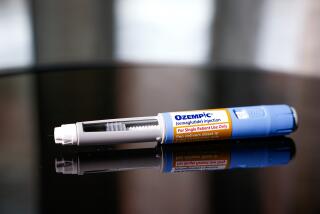Tale of Two Hospitals and of Two Systems : USC facilities provide a mirror of U.S. health care
- Share via
Spread over a few acres of rolling land in Boyle Heights, near downtown Los Angeles, is a bigger-than life model of the best and the worst of America’s health care system.
At the foot of one small hill is the Los Angeles County-University of Southern California Medical Center. It is a magnet for the poorest of the county’s citizens--women in childbirth seeing a doctor for the first time since they conceived, gang members with bullet wounds, people whose diseases are too far advanced to be helped anywhere but a hospital, if there. They are, in short, people who cannot afford medical care, crammed into 2,000 beds in buildings not many years short of condemnation.
This is the sort of facility that frames the words “not acceptable, morally, ethically or economically” as said by Dr. Gordon D. Lundberg, editor of the Journal of the American Medical Assn. Lundberg and the AMA this week issued their strongest statement yet, deploring the state of the American health care network.
Just over the rim of the hill is an example of the system at its best, the Francisco Bravo Medical Magnet High School. It draws students from throughout the Los Angeles school district to a school whose curriculum points them toward careers in medicine. It gives them four years of high school a block away from the USC School of Medicine.
Also part of the complex are Kenneth T. Norris Jr. Cancer Hospital and Doheny Eye Hospital, both models of the best in medical care. Norris is a USC hospital, one of two dozen around the country affiliated with the National Cancer Institute, specializing in treatment at the leading edge of cancer research.
Then there is the new kid on the block, the USC University Hospital, a $157 million facility that was dedicated last week. Built by National Medical Enterprises, a for-profit health corporation, it sits on land leased from USC. The hospital will hum with the newest medical technology and recruit big-name doctors from around the world to attract patients who can afford the very best. But it will have no obstetrical unit and no emergency room, two of the health-care services most utilized by the poor.
The USC medical school will continue to supply doctors for both hospitals. The university insists that it will not skimp on care for the poor. But there is a lingering sense that the contrast between the best and the worst, so nearly shoulder to shoulder, is somehow unseemly.
The marked difference between care available to the rich and poor is one factor that drove even the conservative AMA into the movement to reform the system. The reformers don’t want to get rid of the new hospital; they want to refurbish the system so that the poor can share the best help available with the affluent.
What makes the contrast in Boyle Heights so stark is that the old medical center is so shabby--not that the new hospital is the best that money can buy. There is nothing wrong with people who need treatment seeking out the best, including profit-making corporations that hire doctors to provide that treatment. That is the American system.
What is unconscionably wrong is that the American system once also provided far better care for people who could not afford it, or who could not afford all of it. As a fifth consecutive Gallup Poll showed last week, about 75% of Californians believe strongly that society has an obligation to make the health care system work as well for the poor as it does for the wealthy.
The AMA’s recent resounding call for reform may well be what it takes to galvanize politicians from the President on down into action. And the new USC University Hospital may have two missions: to serve its patients, and perhaps just as important, to serve as a very visible monitor of the vital signs of health-care reform.






